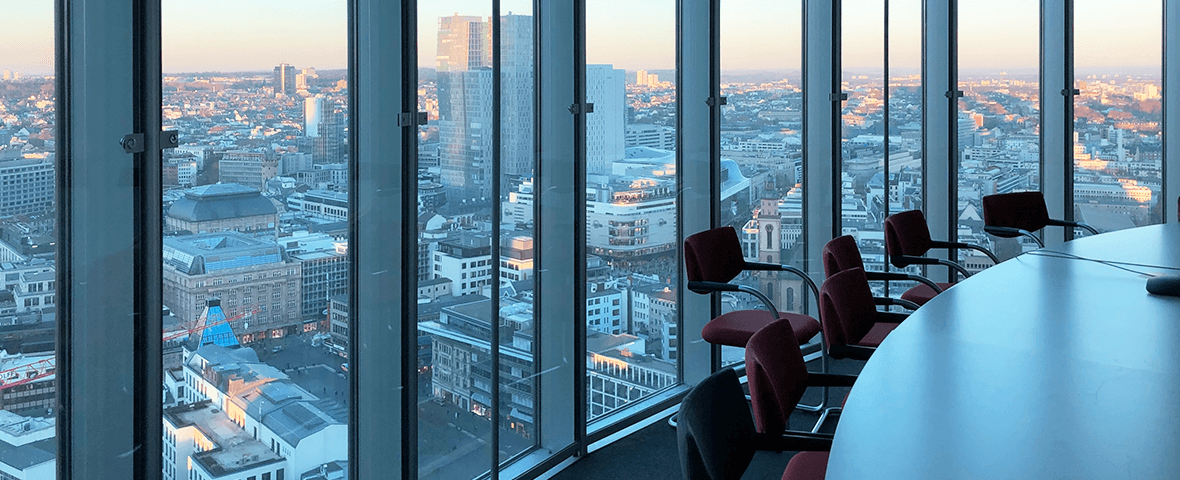Service Works Global CEO, Gary Watkins, explains how workplaces can leverage technology to make informed decisions around change. This article was featured in online journal i-FM.
We all know that the world of work is changing. The COVID-19 pandemic has widened and accelerated trends around remote and flexible working, calling into question the relevancy of workplace setups which were traditionally posed as the productivity hub of enterprises.
Workers would arrive, complete their work, and leave, with clear separation between home and office life.
However, for a plethora of health, wellbeing, lifestyle and other reasons, this dynamic has changed with the normalisation of new models during the pandemic.
In July of 2021, the Office for National Statistics (ONS) released a survey which stated that 85 per cent of those currently homeworking wanted to use a hybrid approach of home and office working in the future.
In turn, businesses are responding to this trend by repurposing offices and workspaces to make them better suited to the needs of their employees.
Another survey has found that almost three in four office-based businesses expect to transform the design of their workplace in the next two years, and that 28 per cent of those with multiple sites will be updating their entire estate.
There are many ways in which spaces are being transformed.
From creating more collaborative, creative and sustainable environments to adding features which promote mental and physical wellbeing, organisations are reimagining the purpose of their workplaces to suit the hybrid model and encourage employees back to their premises.
BIM and digital twins – what are they?
Here, technology can play a critical role in informing such strategies.
The value of data-driven insights, and making decisions based on factual information, has been made clear in the facilities management sector over recent years through the increased adoption of several smart solutions.
One of those is building information modelling, commonly known as BIM.
In short, BIM is the holistic process of creating and managing information for a building. Hosted on a cloud platform, BIM integrates multiple types of data to produce a digital representation of an asset across its lifecycle.
Historically, BIM has been the domain of the architecture and construction sectors, but we are now seeing a growing uptake in the adoption of the technology to inform operational activities.
Indeed, facilities managers are realising the value of the rich data harvested during the planning and construction phases of a building’s lifecycle, and how it can inform strategies to improve operational and environmental efficiency.
And we are now seeing this advance further in the form of digital twins.
A digital twin is, essentially, the next level of BIM in terms of its ability to provide data and improve service. Once a BIM model has gained access to continuous data through various sensors spread throughout a building, it becomes a digital twin which replicates all aspects of a building and its performance.
Key use cases for repurposing workplaces
In combination, BIM and digital twins carry obvious potential to help business and FM leaders inform their workplace strategies.
Which areas need enhanced ventilation capabilities? What rooms are most cost effective in terms of heating and cooling? Where are employees spending most of their time for work and breaks? These are all key questions that BIM and digital twin data can help to answer.
There are a number of specific uses which can help support FMs and businesses, a handful of which will be outlined here.
The first is integration with computer aided facilities management (CAFM) software to provide a joined-up system for all users.
By doing this, key information can be relayed to FM teams. This includes classifications of each space, minimum and maximum temperatures, types of materials, and a range of other exhaustive details about each asset.
Another key use case of BIM and digital twins in workplace repurposing is to model or test the impact certain changes would make. For example, how would current ventilation systems cope with an increase in occupancy? What air quality would be expected if a certain room was fully occupied for several hours in a day? How would rejigging a room and its fixtures impact on metrics such as the provision of natural light and amount of heating or cooling required?
Making use of quality data
To obtain information to model all these scenarios, quality data needs to be fed into the digital twin modelling.
This is where BIM can also play a useful role. Here, the data and insights already in the system can help to identify the best places in buildings and rooms to place sensors. This is important, as installing sensors in particularly enclosed or exposed parts of rooms may lead to an inaccurate picture of what occupants are actually experiencing.
Furthermore, BIM models can be paired with virtual reality headsets or even mobile phones to allow simulated site visits from anywhere in the world.
For organisations with multiple assets spread across the world, this could enable key decision makers to be virtually on-site and maintain hands-on involvement in any strategy to repurpose workspaces, no matter where they are located.
As the purpose of workplaces continues to evolve in the so-called ‘new normal’ era, it is clear that technologies such as BIM and digital twins can provide an all-important factual grounding for change strategies. By basing workplace change on accurate, multidisciplinary data, organisations have a far greater chance of creating spaces that their employees will want to be in and benefit from.





